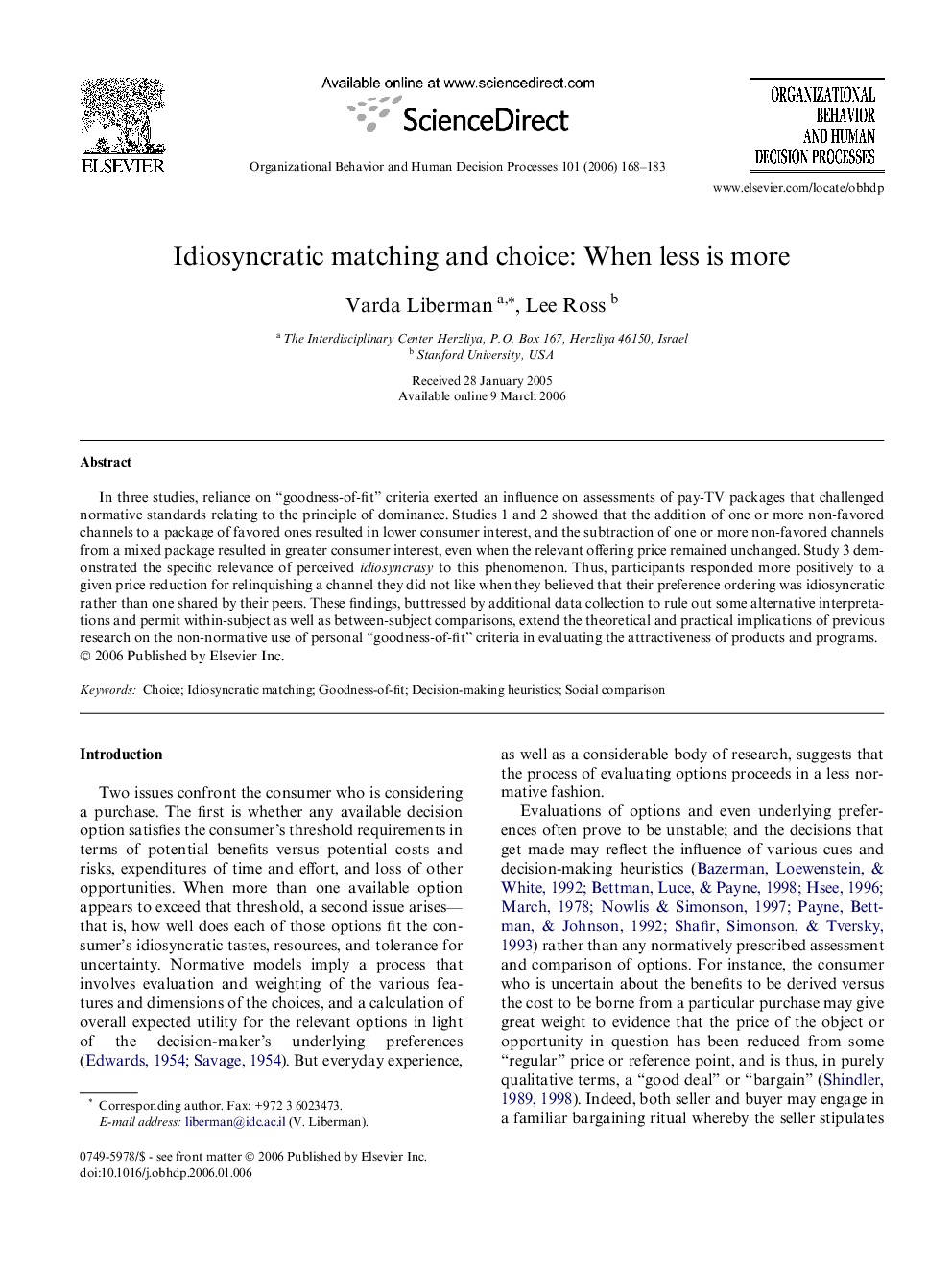| کد مقاله | کد نشریه | سال انتشار | مقاله انگلیسی | نسخه تمام متن |
|---|---|---|---|---|
| 889050 | 913597 | 2006 | 16 صفحه PDF | دانلود رایگان |

In three studies, reliance on “goodness-of-fit” criteria exerted an influence on assessments of pay-TV packages that challenged normative standards relating to the principle of dominance. Studies 1 and 2 showed that the addition of one or more non-favored channels to a package of favored ones resulted in lower consumer interest, and the subtraction of one or more non-favored channels from a mixed package resulted in greater consumer interest, even when the relevant offering price remained unchanged. Study 3 demonstrated the specific relevance of perceived idiosyncrasy to this phenomenon. Thus, participants responded more positively to a given price reduction for relinquishing a channel they did not like when they believed that their preference ordering was idiosyncratic rather than one shared by their peers. These findings, buttressed by additional data collection to rule out some alternative interpretations and permit within-subject as well as between-subject comparisons, extend the theoretical and practical implications of previous research on the non-normative use of personal “goodness-of-fit” criteria in evaluating the attractiveness of products and programs.
Journal: Organizational Behavior and Human Decision Processes - Volume 101, Issue 2, November 2006, Pages 168–183